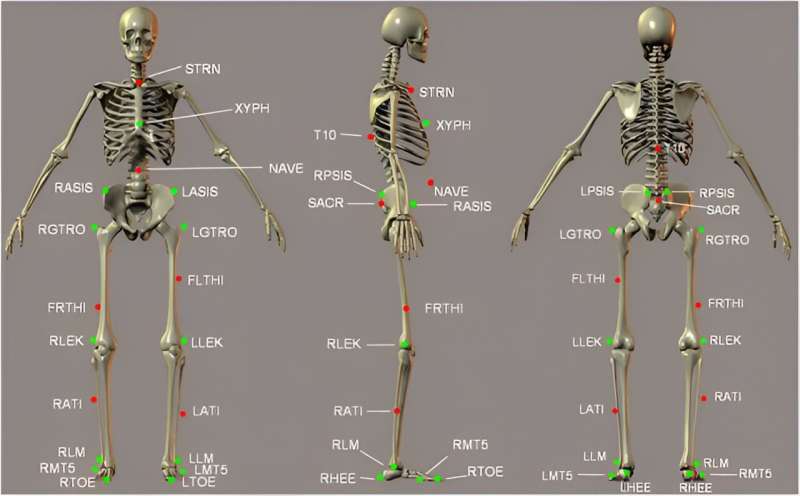This article has been reviewed according to Science X's editorial process and policies. Editors have highlighted the following attributes while ensuring the content's credibility:
fact-checked
peer-reviewed publication
proofread
Can a purposeful walk intervention and an activity monitor improve hip replacement patients' daily fitness?

A research paper by scientists at Bournemouth University proposed a randomized pilot trial, which aimed to determine the effect of an intervention where outdoor walking distance is used as a goal to increase the daily activity of older adults using a commercial activity monitor at 3 to 6 months post total hip replacement (THR).
The new research paper, published in the journal Cyborg and Bionic Systems, indicated the participants in the intervention group had higher activity levels after THR compared to those in the control group. The Cohen's effect sizes were larger for the changes in the gait, Hip Disability and Osteoarthritis Outcome Score, and Psychosocial Impact of Assistive Devices Scale data in the intervention group in contrast to the control group.
THR should not only be to improve pain but also lead to improving physical activity. This activity should preferably meet the recommended daily activity levels (at least 150 to 300 minutes of moderate-intensity physical activity per week) by the World Health Organization. THR patients benefit from improved joint range, muscle strength, and coordination through physical activity. This aids in restoring optimal biomechanics and overall mobility.
"Activity monitors have been extensively used as an incentive to encourage people in the wider population to become more active through walking. However, when it comes to the THR cohort, the evidence of distance-based interventions is limited, in particular when it comes to outdoor walking," explained study author Shayan Bahadori, a professor at Bournemouth University.
The focus of current studies has been merely on monitoring or enhancing the amount of walking using the step count parameter. "This is a shortcoming because a recognized technical problem with the activity monitors is their diminishing accuracy in step counting associated with decreased walking speed, which is often a gait characteristic associated with people after THR operation."
"Additionally, there is currently a lack of attention for personalized plans in the postoperative period, which is against the desire of individuals undergoing THR surgery. Further evidence also suggests that individuals undergoing THR surgery are interested and receptive to wearable technologies and, in particular, enjoy the outdoor elements where sensors such as Global Positioning System technology are used to track their daily outdoor activities," said study authors.
This study aims to determine the effect of an intervention where an outdoor walking distance is used as a goal to increase daily walking activity, using a commercially available activity monitor, in people after THR 3 to 6 months post-THR surgery. "Throughout this protocol, we will refer to the outdoor walk that is recorded with a GPS sensor as a 'purposeful walk'," said Shayan Bahadori.
The study authors suggested that the study was the first randomized trial to report the effect of the outdoor purposeful walk, monitored using a commercial activity monitor. The findings suggest that the purposeful walking intervention was successful in increasing daily walking activity and function in contrast to the control group.
"In future work, further research with a larger sample size is required to provide tangible evidence on the significance of the effect of the purposeful walk in contrast to step count," said Shayan Bahadori. Totally, the study can contribute to the fields of health activity monitoring and inspiring innovation around it.
More information: Shayan Bahadori et al, Can a Purposeful Walk Intervention with a Distance Goal Using an Activity Monitor Improve Individuals' Daily Activity and Function Post Total Hip Replacement Surgery. A Randomized Pilot Trial, Cyborg and Bionic Systems (2023). DOI: 10.34133/cbsystems.0069



















